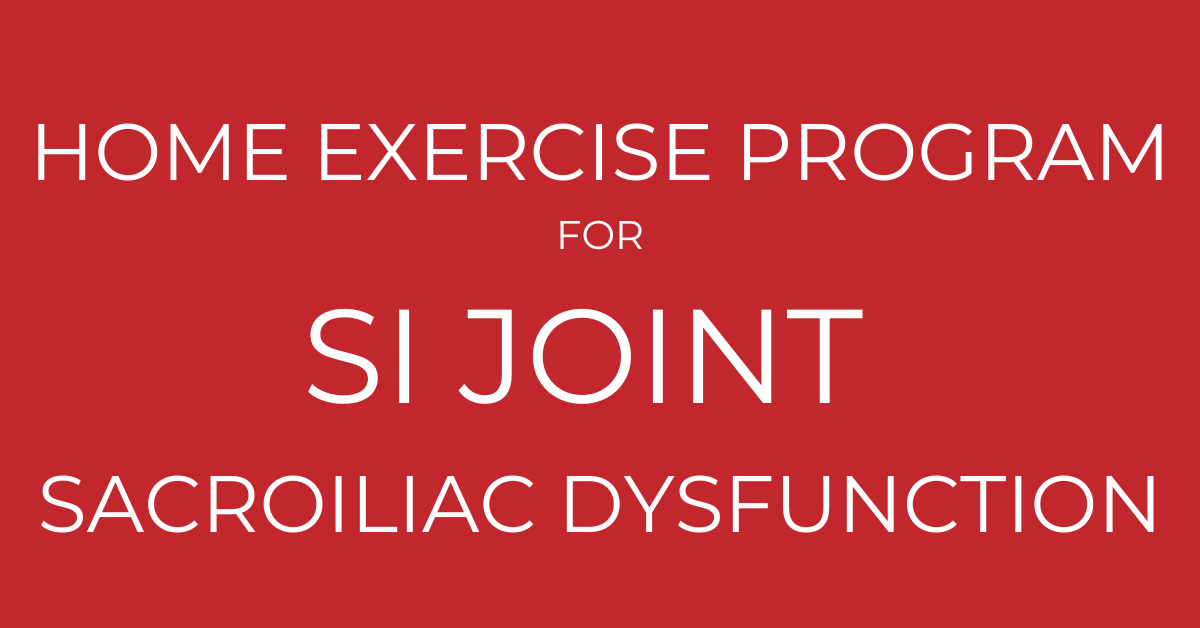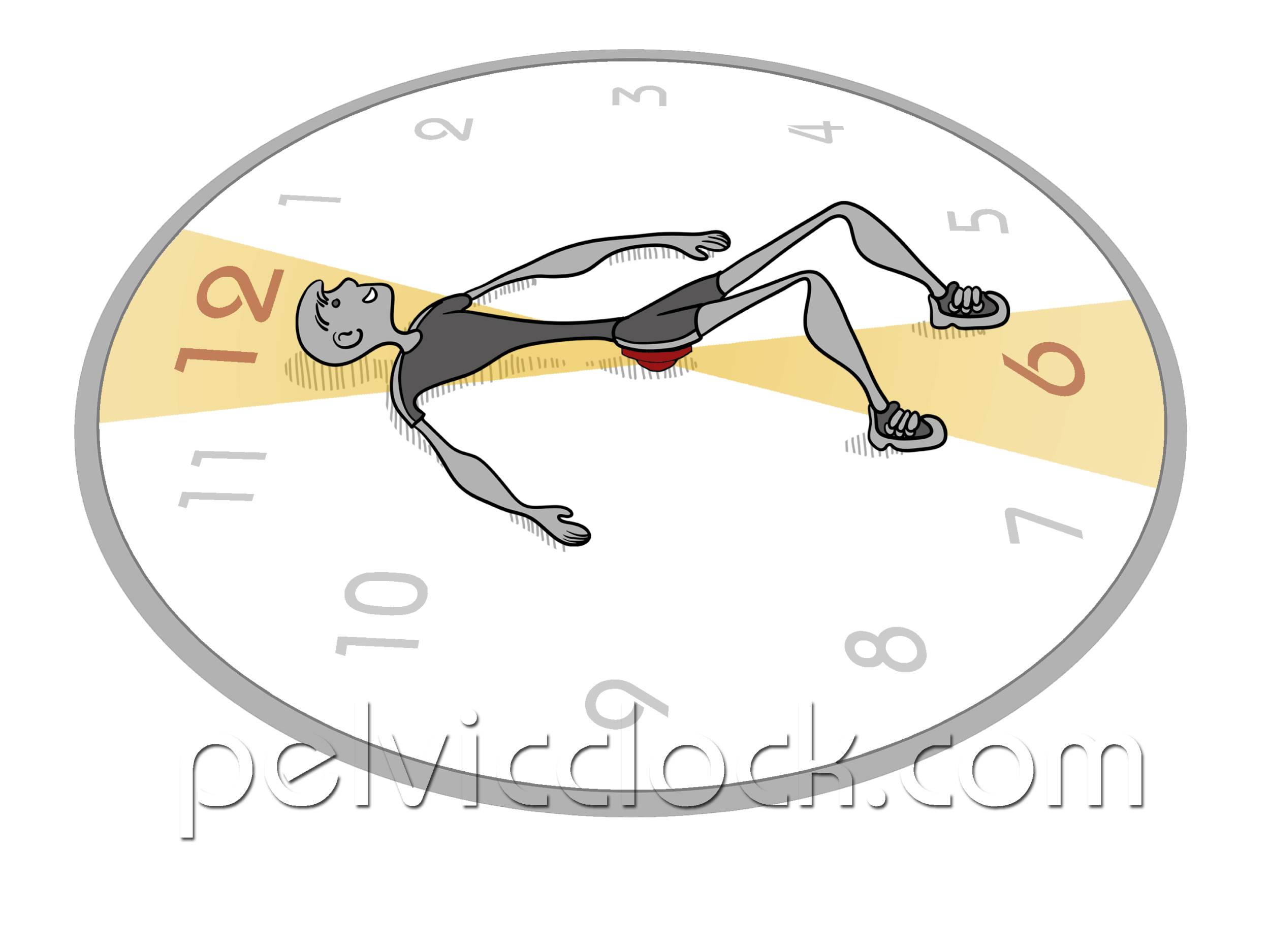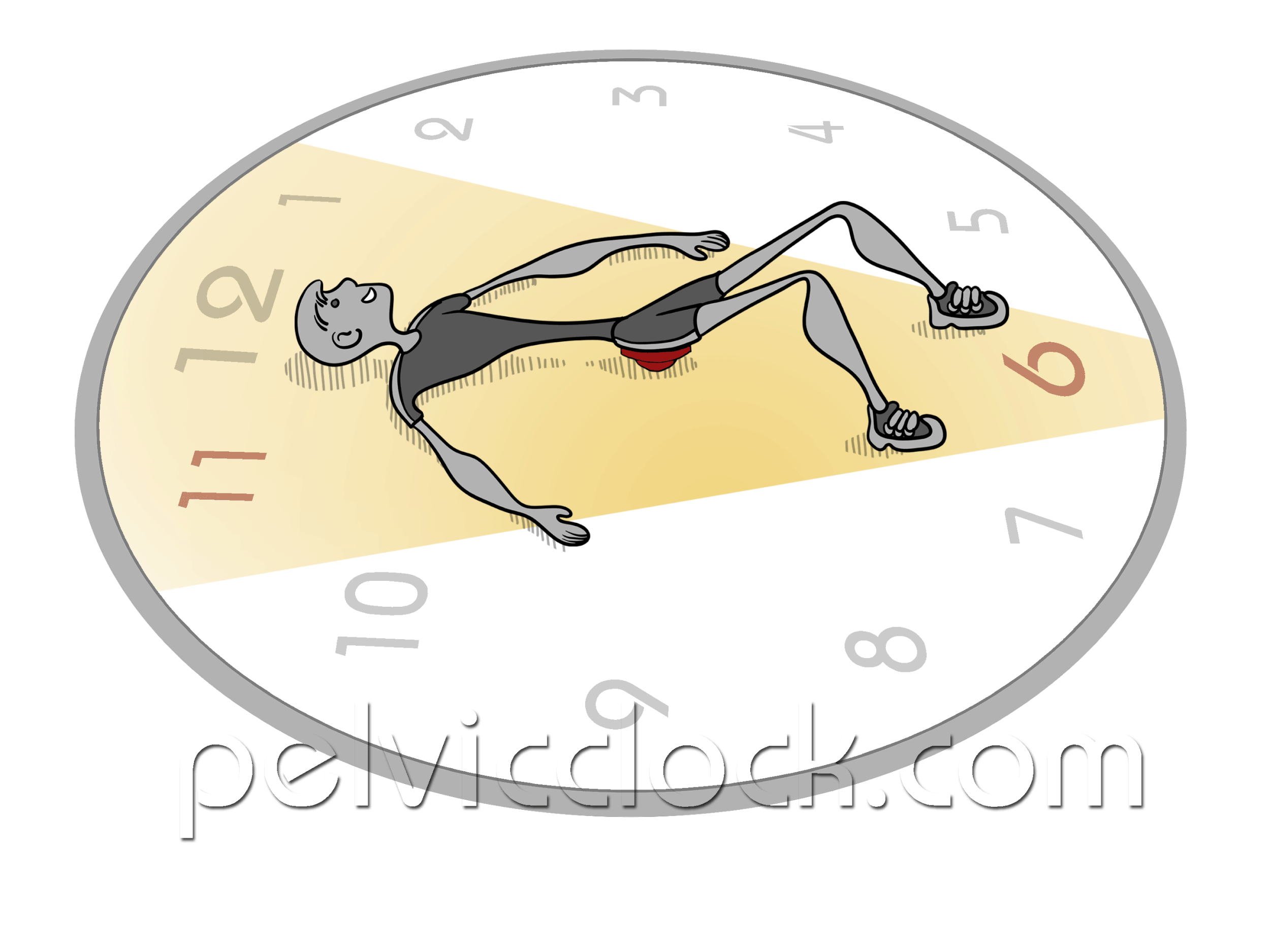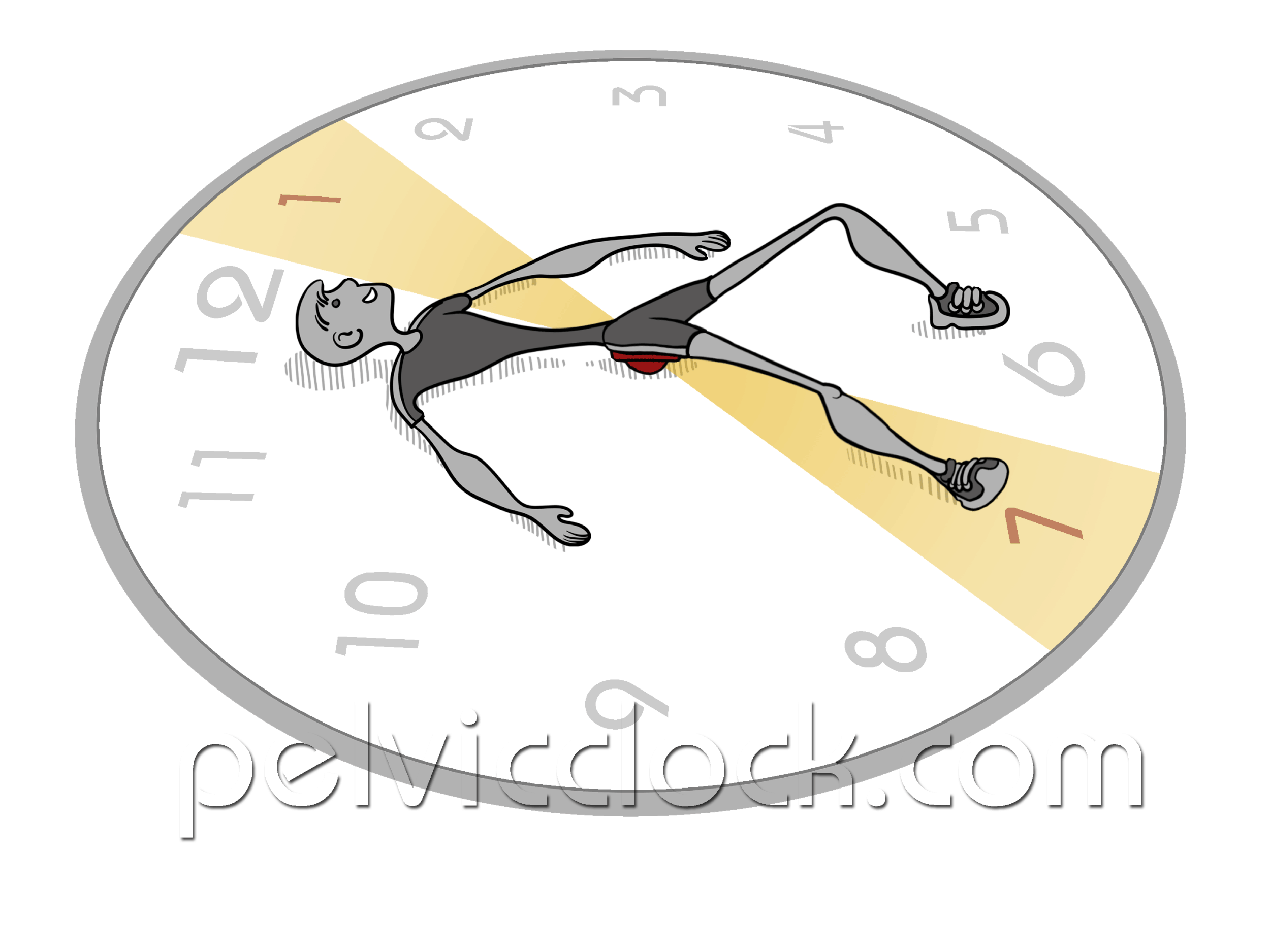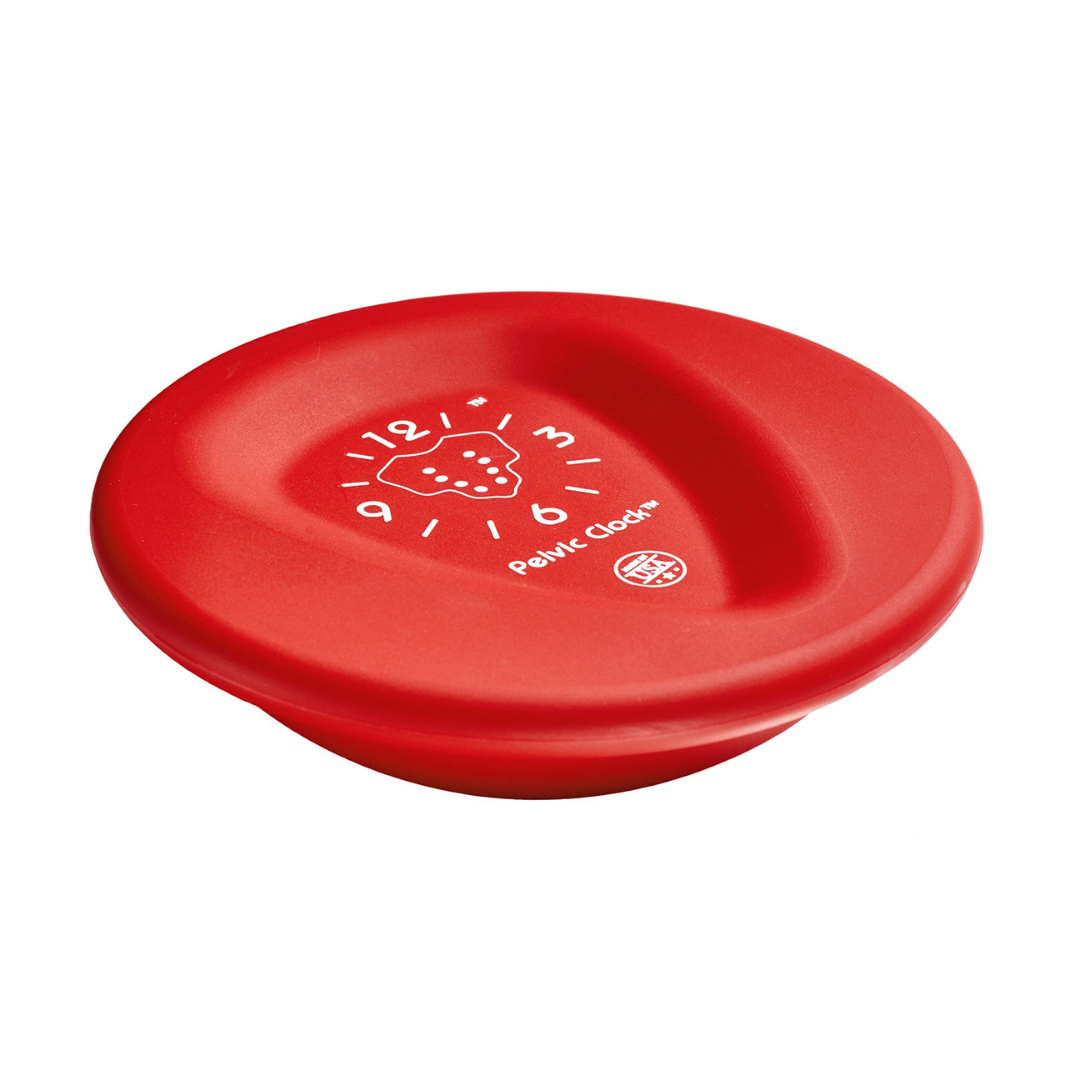SI Joint Pain: Home Exercise Program for Sacroiliac Dysfunction
Yana Blinova
By Yana Blinova, MS, Inventor of Pelvic Clock® Exercise Device, Former Olympic Coach
If you’ve suffered from back and hip pain, you might have been told that your sacroiliac joint was responsible. So, if you’ve found yourself searching online for SIJ pain relieving exercises or SI joint stretches, then the chances are that you found the common recommendations such as the Child’s Pose or a general stretching of the hamstrings or low back. While these selections are a good start, obtaining the right alignment and creating proper SI joint stabilization require a deeper approach, and the addition of some newer, more updated exercises.
The SI joint is a weight-bearing joint, with the mass of your upper body pressing down onto it when you walk. It connects the sacrum to the ilium (hip) bones, and is protected by several ligaments and muscles. Now, if just one of these muscles is dormant and “taking a free ride”, so to speak, while the other muscles are left to do the work, then the entire SI joint loses its ability to stabilize and work properly, which can be painful as well as restrictive.
Below are the traditional physical therapy SI Joint exercises for pain relief and stabilization:
“Single Knee to Chest” - Bring your knee toward your chest, then push your knee against your hands and hold for 10 seconds.
“Squeeze The Ball” - Inhale, arch your back and squeeze a ball with your knees.
“Spread Your Knees” - Pull your legs apart with a belt wrapped around the knees for resistance.
All three of these exercises are isometric, which means you generate a muscle contraction without the visible movement that normally accompanies exercise. Each exercise would generally be repeated 10 times.
“Pelvic Tilts” are also common to therapeutic protocols for lower back pain relief as they help to create a natural, neutral spine position.
For example, the traditional “Forward-Back Pelvic Tilts” are a simple but helpful exercise: Just tilt the pelvis toward the head, then down toward the feet. This is a great way to stretch and decompress the lower back. As we take a closer look at the value of this exercise, however, we’re actually going to find more hidden benefits, as pelvic tilts are a more significant component to an SI joint workout than most people realize.
What causes SI Joint pain?
In most cases of Sacroiliac joint instability, one of the ilium (hip) bones rotates backwards and gets “stuck” there, causing SI joint misalignment and pain.
A chiropractic adjustment or manual therapy is required to put this bone back where it belongs. But, advanced, targeted pelvic tilts can be also effectively used for sacroiliac re-alignment and stabilization.
As we explore these “precision pelvic exercises”, having some basic knowledge of human anatomy will help your mind-body connection.
The concept of creating visual cues using the numbers on an imaginary clock as a guide originated in somatic exercise methods several decades ago. It’s successfully used by physical therapists, Pilates instructors, and by Feldenkrais practitioners for lumbar, pelvic and hip rehabilitation. We’ll apply this concept here to your SI joint pain exercises:
SI joints
If you imagine your pelvis sitting inside a conventional clock, then the SI joints are located around the 1:00 and 11:00 positions on this “pelvic clock”.
This is why rocking the pelvis diagonally (towards the 1:00 and/or the 11:00 position) instead of straight forward & back (which would be to 6:00 and 12:00) is much more effective. This small detail actually makes a big difference in reducing or eliminating pain.
The most current research has demonstrated that SI joint stability boils down to the health and performance of three very critical muscle groups: The internal & external obliques, the transversus abdominis, and the gluteus medius.
Internal Obliques
External Obliques
Transversus Abdominis
Even for serious core exercisers, these internal obliques are often hypertonic, meaning they are overwhelmed and just not able to handle the stress of their job. This creates pressure on the sacroiliac joint, which often leads to pain. By performing a diagonal pelvic tilt exercise, we increase the strength of the external and internal obliques, thereby allowing them to perform their job properly and without causing pain.
But, the internal obliques are not the only culprit! We also need to restore a healthy, smooth range-of-motion at the SI joints:
Pelvic Clock® Exercises for SI Joint PAIN RELIEF
12 - 6 Pelvic Tilts
INHALE as you tilt your pelvis forward toward the 6:00 marker
EXHALE as you lean back toward 12:00
HOLD this 12:00 position for 5 seconds.
Achieving the 12:00 position is similar to a traditional “stomach crunch” exercise.
Adding the “stomach vacuum” component transforms this simple movement into the most powerful exercise possible for the Transversus Abdominis muscle. All you have to do is exhale completely, tilt your pelvis backwards, and hold the “crunch”.Diaphragmatic breathing is helpful when performing any stretch, but it is especially pertinent during pelvic exercises. So, we’ll apply diaphragmatic breathing to the diagonal pelvic tilts in a similar way:
6 - 1 - 6 - 11 Pelvic Tilts
Lying down with your knees bent, feet flat on the floor, hip distance apart. Rock forward and back following a 6-1-6-11 pattern.
6 - 1
INHALE as you tilt your pelvis forward toward the 6:00 marker
EXHALE as you lean back toward 1:00
HOLD this 1:00 “crunch position” for 5 seconds.
6 - 11
INHALE as you tilt your pelvis forward toward the 6:00 marker
EXHALE as you lean back toward 11:00
HOLD this 11:00 “crunch position” for 5 seconds.
Repeat this exercise 10-20 times.
Diagonal Pelvic Tilt
Some people feel sacroiliac pain relief immediately after this exercise. If this is not the case and your SI joint pain is still present, then try a Diagonal Pelvic Tilt with a Straight Leg:
If your left SI joint is bothering you, stretch your right leg and slide it a few inches to the right.
7-1
INHALE as you tilt your pelvis forward to the right
EXHALE as you tilt back to the left
HOLD the 1:00 “crunch position” for 5 seconds.
Repeat 10 times.
These exercises are best suited for use with a cushion or with The Pelvic Clock exercise device. The Pelvic Clock exercise device makes these exercises more effective by guiding each movement. It also helps increase the range of pelvic motion in every direction and speed up a lengthy si joint stabilization workout.
The device, originally designed for physical therapists, turned out to be perfectly suitable for home exercise programs.
Don’t forget to include strengthening exercises for the gluteus medius muscle in your SI joint stabilization routine. They are well known “classics”: “Clamshells”, “Side Steps”, and “Bridges”.
If you suffer from flat feet on top of a gluteus medius weakness, then try a modified version of the “Bridge” exercise using the Pelvic Clock exercise device under your arches.
ADDITIONAL Exercises for SI Joint StabiliZATION
“Bridge” with Pelvic Clock device
Lie down with your knees bent.
Wrap your feet around The Pelvic Clock exercise device with knees apart.
Keep your weight on the outer sides of your feet.
Mimic squeezing a huge orthotic arch support between your feet.
Lift your pelvis off the floor. Hold the bridge for 5 seconds. Return to the starting position.
Make sure that the device is upside down . The round bottom of the device should be facing up.
“Clamshells”
Lie on your side with your knees bent
Slowly pull the top knee up while keeping the feet together
Repeat 10 times
“Side Steps”
Stand with your feet hip distance apart, ankles slightly inverted (toes pointed inside) and with an elastic band wrapped around your ankles
Slightly bend your knees and take 10 steps to your right, then 10 to your left to return to where you began.
“Bridge” (also known as the “Pelvic Lift”)
Lie on your back with your knees bent .
Lift the pelvis and lower spine off the floor, keeping your feet on the floor
Once your shoulders, hips and knees are all forming one line, hold the bridge for 5 seconds, then slowly return to your starting position.
